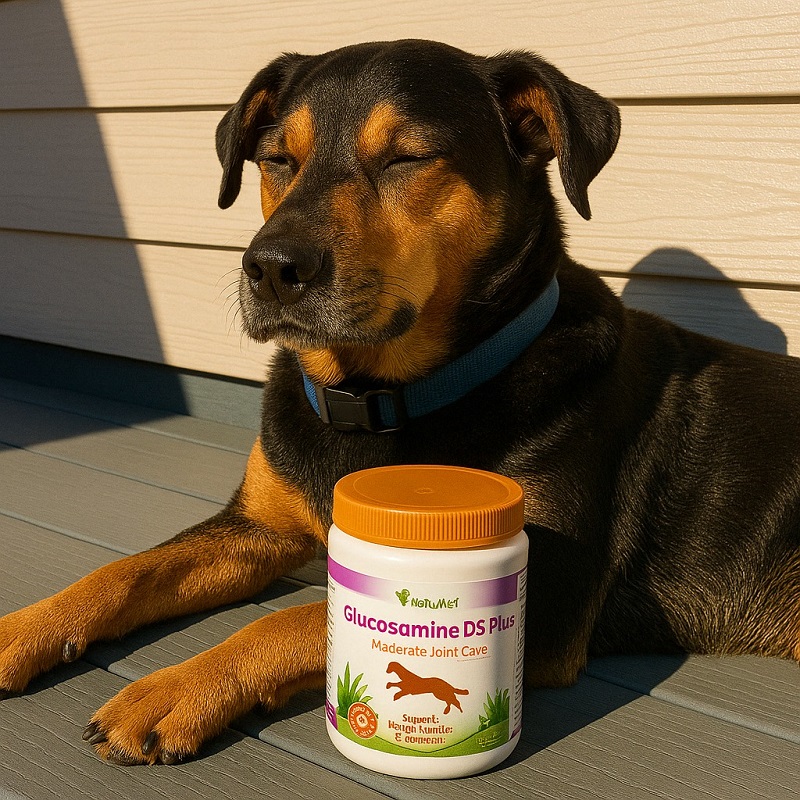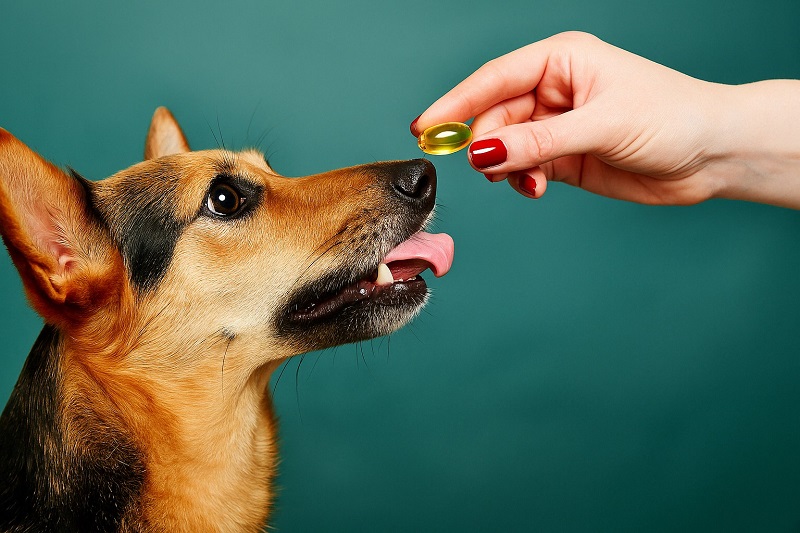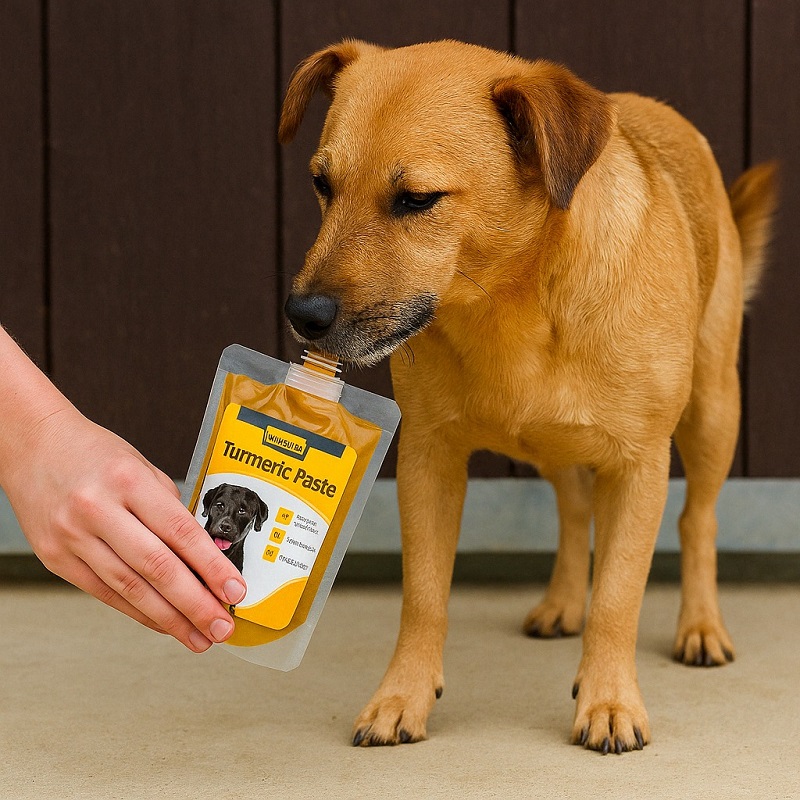Hunting dogs are built for endurance, strength, and sharp instincts, but even the most agile working dog feels the strain after hours of movement across rough terrain. Joint pressure builds with every leap, sprint, and sudden stop, and over time, that pressure can turn into stiffness, pain, or limited mobility. That is where joint supplements come in-not as a shortcut, but as support for the dog’s natural ability to stay active and responsive in the field.
Owners often wait until the signs appear. Slower pace. Less eagerness. Difficulty rising after rest. Each of those signals points to one thing-joints under stress. A proactive approach works better. Certain supplements can strengthen joint structure, ease inflammation, and help the body stay balanced during high-demand work. Every ingredient matters. Every choice makes a difference.
Glucosamine: Restoring Mobility and Reinforcing Cartilage Structure

Glucosamine supports the structural foundation of a dog’s joints. Hunting dogs put constant strain on their hips, shoulders, and knees. Every leap and hard landing chips away at cartilage if it is not supported. Glucosamine enters the scene not as a quick fix, but as a compound that helps reinforce the cartilage layer before the damage spreads.
It stimulates the formation of key joint components, helping to rebuild the connective padding between bones. Dogs who limp after a hunt or hesitate to jump into the truck may show signs of early cartilage wear. Adding glucosamine helps the joint recover and move with less friction.
Supplementation works best before cartilage loss becomes advanced. Active dogs benefit when glucosamine becomes part of their year-round regimen, not only during hunting season.
What to Look For in Glucosamine-Based Products
Skip low-dose chewables with vague blends. Select products with clear glucosamine hydrochloride or sulfate content, ideally measured by weight. Solid powder-based options or liquid formulas often offer higher absorption rates than dry biscuits. Look for products that separate glucosamine dosing based on dog size or workload.
Chondroitin Sulfate: Cushioning Impact and Defending Joint Integrity
Chondroitin sulfate protects joints under pressure. It draws fluid into the cartilage, helping it stay elastic and able to absorb shock. In the hunting field, that shock comes fast and often. Each twist through brush, each chase over frozen ground, hits the joints harder than owners realize.
This compound slows the enzymes that eat away at joint padding. That preservation makes it valuable not only for recovery but for prevention. When paired with glucosamine, it gives the joint both materials and defense-one builds, the other guards.
Dogs who display stiffness only after rest often show early signs of cartilage breakdown. Chondroitin supports a smoother transition between rest and movement.
Where Chondroitin Makes the Most Impact
Choose formulations where chondroitin stands as a primary ingredient-not buried behind fillers or flavorings. Powder blends and soft chews designed for large or active breeds often include therapeutic doses. Look for a balance that also includes Omega-3 or MSM for complete daily coverage during hunting months.
MSM: Controlling Inflammation and Easing Post-Hunt Discomfort
MSM reduces inflammation in joints stressed by repetitive motion or impact. That inflammation, even when not visible, affects how a dog moves, rests, and recovers. MSM works deep within the tissue to calm that internal response. It also delivers sulfur, which helps repair tendons and ligaments exposed to strain.
After intense physical work, MSM reduces soreness and joint heat. Dogs may not limp, but if they rest more than usual, hesitate on stairs, or show irritability during touch, inflammation may already be present. MSM brings down those silent signals before they grow into long-term damage.
Unlike compounds that take weeks to build up, MSM often shows results within days. That makes it especially useful during peak hunting periods.
Best Ways to Include MSM in a Joint Support Plan
Use it as a standalone supplement during recovery-heavy months or in combination with cartilage-supporting compounds during active training. MSM should appear clearly dosed in the ingredient list, not hidden in a “proprietary blend.” Liquid forms or powders mixed into food often outperform dense treat-style delivery when it comes to absorption and daily consistency.
Omega-3 Fatty Acids: Controlling Joint Inflammation and Supporting Fluid Motion

Omega-3 fatty acids-especially EPA and DHA-reduce joint inflammation without harsh side effects. For hunting dogs, inflammation builds silently. It does not always show up as limping. It often appears as stiffness in the morning, slower pace, or an unwillingness to take sharp turns.
These fatty acids act at the cellular level, changing how the body responds to stress. They reduce the production of inflammatory markers that damage joints after extended use. That protection allows dogs to move freely without swelling or irritation after long days in the field.
Omega-3s also improve joint fluid quality. Healthy synovial fluid means smoother motion and less grinding between bones.
Smart Ways to Add Omega-3s into a Dog’s Routine
Look for supplements sourced from marine oils such as cold-water fish or krill. Avoid blends that simply list “fish oil” without breakdowns of EPA and DHA content. Measured dosage by weight offers the best result. For hunting dogs, higher EPA concentrations tend to perform best. Use during both active seasons and downtime to preserve long-term joint health.
Green-Lipped Mussel: Natural Support for Joint Strength and Shock Absorption
Green-lipped mussel offers a rare combination of nutrients that support joint structure and reduce inflammation. Harvested from cold coastal waters, it contains Omega-3 fatty acids, glucosamine-like compounds, and antioxidants-all in one natural source. For hunting dogs, that means protection during active motion and recovery afterward.
What sets it apart is its ability to cushion impact. Dogs that land hard or sprint across uneven terrain benefit from the joint-soothing properties built into this marine extract. It also supports the integrity of tendons and ligaments connected to high-motion joints.
This is not a basic ingredient-it plays multiple roles in one formula and works best for dogs already showing signs of joint fatigue.
How to Choose the Right Form of Green-Lipped Mussel
Focus on cold-processed powders or freeze-dried concentrates. Avoid products with low mussel content buried under fillers or artificial additives. Purity matters more than quantity. Ideal options include formulas where green-lipped mussel stands out as a feature ingredient-not an afterthought.
Turmeric (Curcumin): Natural Relief for Joint Swelling and Stiffness

Turmeric, through its active compound curcumin, reduces inflammation in stiff or sore joints. It works by limiting pathways that trigger swelling, particularly after intense movement. Dogs often slow down not because of pain, but because of stiffness that curcumin can help manage.
Unlike synthetic anti-inflammatory options, turmeric supports comfort without harsh effects on digestion or alertness. For hunting dogs with sensitivity to long-term medication, turmeric offers an effective and natural alternative.
It also acts as an antioxidant, helping joints recover between intense activity sessions and protecting tissue from further damage.
Effective Use of Turmeric in Joint Health Plans
Look for supplements that include curcumin extract with added black pepper or a fat-based carrier. That combination improves absorption and delivers results faster. Choose turmeric products designed for dogs, not human leftovers. Use during active recovery periods or to manage seasonal stiffness as dogs age or return to heavier field work.
Hyaluronic Acid: Supporting Joint Lubrication and Shock Absorption
Hyaluronic acid plays a vital role in joint lubrication. It thickens the synovial fluid that cushions the space between bones. Hunting dogs rely on that cushion with every fast-paced movement. When the fluid thins, the result is grinding, pressure, and discomfort-often felt during cold mornings or long recovery days.
This compound acts like a sponge inside the joint. It holds water, prevents friction, and allows smoother, quieter movement. That benefit becomes most obvious in dogs that appear stiff after rest but loosen up after a few minutes of walking.
Hyaluronic acid works well in dogs with early joint changes who still have strong cartilage but show signs of dryness or reduced joint motion.
Selecting Effective Hyaluronic Acid Supplements
Find products that offer this ingredient in liquid or powder form, not just trace amounts hidden in complex blends. Look for dosage recommendations based on the dog’s weight and activity level. Use daily during heavy use periods, especially when dogs run across hard or frozen surfaces.
Collagen Type II: Strengthening Joint Tissues and Slowing Cartilage Breakdown
Collagen Type II supports the soft framework that holds joints together. It reinforces tendons, ligaments, and cartilage-all of which take heavy stress in an active hunting dog. Over time, those tissues stretch, weaken, or tear under pressure. Collagen fills in the gaps and strengthens those structural points.
Unlike general collagen blends, Type II focuses directly on joint tissue. It provides amino acids that repair microscopic damage and extend the lifespan of the cartilage matrix. Dogs with soft tissue strain or visible instability often benefit from added collagen support.
It is especially valuable for older dogs or breeds prone to hip or shoulder problems.
Where Collagen Type II Fits into a Supplement Plan
Choose supplements that isolate Collagen Type II, not general protein mixes. Avoid flavored powders with low actual collagen content. Look for hydrolyzed or undenatured forms for better absorption. Use it long-term to rebuild structure beneath the surface-not just for short-term relief.
Antioxidants: Protecting Joints from Damage and Reducing Wear
Antioxidants shield joints from oxidative stress-the internal process that breaks down tissue during intense effort. Every hunt, every chase, every sudden twist produces free radicals that damage cells. Antioxidants stop that chain reaction and protect joint surfaces before permanent wear sets in.
Vitamin C, Vitamin E, and plant-based compounds like quercetin and boswellia all help reduce internal damage. They support healing, maintain tissue quality, and extend joint durability over time. Active dogs face more stress than average pets, so antioxidant support becomes essential for longevity.
Best Ways to Use Antioxidants for Joint Defense
Look for supplements that include multiple antioxidant sources, not just a single vitamin. Blends that mix vitamins with anti-inflammatory herbs or enzymes offer broader support. Use daily during hunting season or as part of a preventive plan in dogs prone to injury or stiffness.
FAQs
How long does it take for joint supplements to show results?
Results depend on the condition and the ingredient. Structural compounds like glucosamine or collagen may take two to four weeks before visible improvement. Anti-inflammatory ingredients such as MSM or Omega-3s may work faster. Most dogs show clearer mobility and comfort after six to eight weeks of consistent daily use.
Can supplements help prevent injury in young dogs with no symptoms?
Yes. Early use supports the development of healthy joint tissue before wear begins. Active or growing dogs benefit from extra support during training or high-impact activity. Starting joint care before any signs appear helps extend mobility and reduce future risk.
Is joint stiffness always a sign of arthritis?
No. Stiffness may also result from muscle fatigue, dehydration, or temporary inflammation. After intense activity or in cold weather, some dogs stiffen up without long-term joint disease. Supplements with MSM, hyaluronic acid, or anti-inflammatory agents often reduce stiffness and improve movement in those cases.
Are seasonal changes linked to more joint problems?
Yes. Cold weather can thicken joint fluid, tighten muscles, and reduce flexibility. Hard ground adds more impact to joints with each step. Dogs often show increased stiffness during colder months, especially during early mornings. Joint supplements with anti-inflammatory and fluid-supporting ingredients can ease seasonal discomfort.
Can dogs take human joint supplements in smaller amounts?
No. Many human supplements contain additives that harm dogs, such as artificial sweeteners or preservatives. Dosage also differs due to differences in metabolism. Always use supplements made specifically for dogs, with safe ingredient sources and proper weight-based dosing.
The Bottom Line
Joint health determines how long a dog can stay active, agile, and pain-free. Each step, each jump, and each movement relies on strong cartilage, balanced fluid, and stable connective tissue. Supplements offer targeted support where food alone cannot reach.
No single ingredient solves every issue. The most effective results come from a combination matched to the dog’s needs, age, and workload. Some dogs need help with recovery. Others need protection before the first signs appear.




